An Honest Review Of The Channel Islands Rocket Wide
Testing the Dane G special in utterly average conditions.
“Hey man, what are you riding?”
This is a question I was asked frequently while testing the Channel Islands Rocket Wide – too frequently, if we’re being honest, for the quality of surfing that was being done on the thing.
Maybe it was the fresh white epoxy enticing their stare. Maybe it was the carbon strip down the board’s center, replacing what would have been the stringer, that made them inquire about my ride. But most likely, it was the Rocket Wide’s quick-twitch response that caught the paddlers-by eye.
Whether or not this comes through in our video, the board felt extremely charged under my feet. The Rocket Wide wanted to always be moving, and because of that, I felt like I was skating on top of the water rather than surfing through it.
As we’ve seen in today’s top pros – including, but certainly not limited to, the greatest surfer of all time, Robert Kelly Slater – epoxy boards provide certain performance benefits but also several deterrents. More specifically, they create extra speed and zip (what we call “Electricity”) compared to PU boards but forfeit a bit of control.
This was felt in my initial experience on the Rocket Wide, which, I should mention, was constructed in Channel Islands’ Spine-Tek tech.
And let’s chat for a second about Spine-Tek.
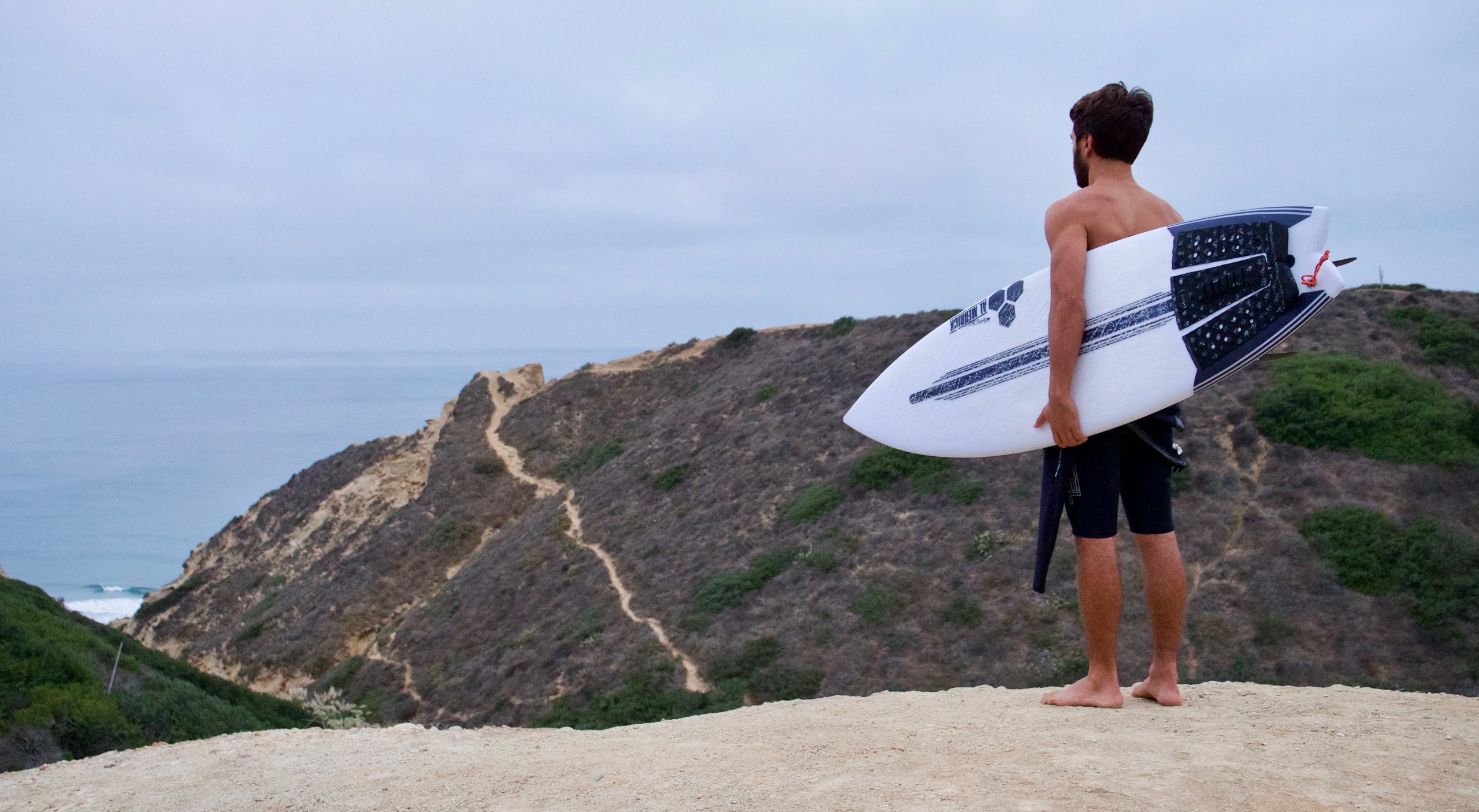
Photography
Ben Judkins
First of all, the components of Spine-Tek have been deemed “EcoBoard Certified” by Sustainable Surf, which in this age of environmental peril is always a plus, for both moral and performance reasons (it’s easier to shred sans the weight of worldwide extinction on your shoulders). But getting into the nitty gritty, CI makes the following claims about Spine-Tek:
-
Increases turning efficiency—redirect faster and more acutely.
-
Loads up on energy (potential), springs back with energy (kinetic).
-
Maintains constant memory—returns board to its natural shape after each turn.
While I won’t claim to know if these attributes are empirically proven or just fanciful marketing jargon, here’s how Spine-Tek actually felt under my feet:
-
Fast, but a little twitchy
-
Bouyant in both good ways and bad
-
Fairly stiff through turns
Which made me wonder: is it possible that Spine-Tek is better geared toward stronger/heavier surfers?
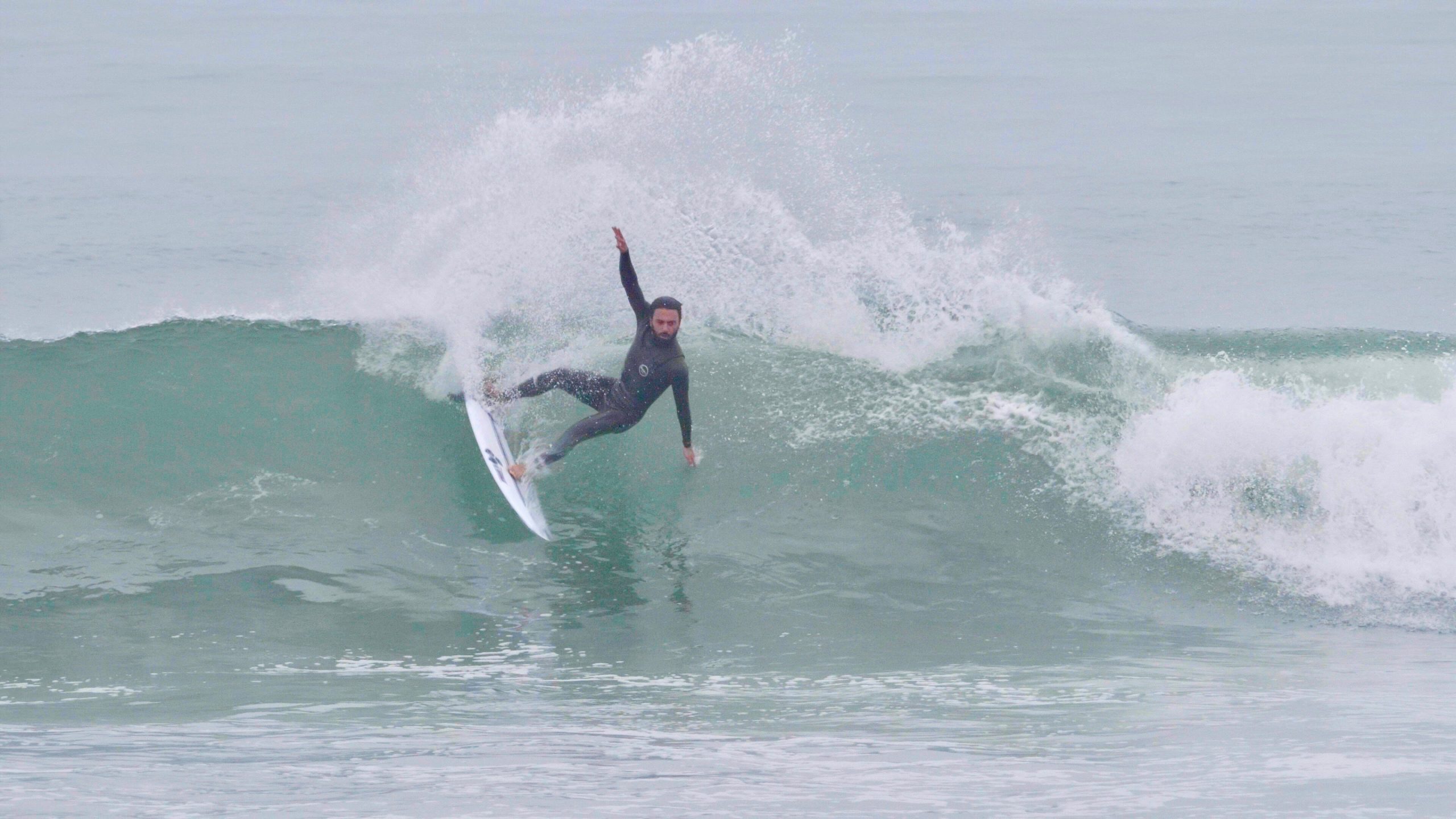
Photography
Ben Judkins
In golf, players choose the stiffness of their clubs’ shafts based on the speed of their swing. Slow swingers, like children and grandmothers, use flimsy shafts to generate clubhead speed (through shaft bend) without exerting much force. Fast swingers, like frat boys and long-limbs, use stiffer shafts, because their inherent power creates clubhead speed without the need for assisted shaft bend.
When you watch the following video of Dane Gudauskas, you’ll see how the board flexes and snaps in synchronicity with his movements. His turns create speed and put him in perfect position for the next. In Dane’s surfing, Spine-Tek achieves everything CI claims of it.
With me, it neither looks nor felt the same.
And no, I’m not ignorant to the fact that on a scale of relative surfing ability, your author is a generous 5 to Dane’s 9. But would you allow me to present a secondary, complementary reason for why Dane’s Rocket Wide looks so explosive and mine without sting?
Could it maybe, on top of the skill disparity, be strength- and weight-related?
According to CI’s site, Dane is 6’1 and 185 pounds.
According to the airport’s bag scale and a wall in my childhood bedroom (your author hasn’t grown since the age of 15!), I’m a staggering 5’5 and 136 pounds.
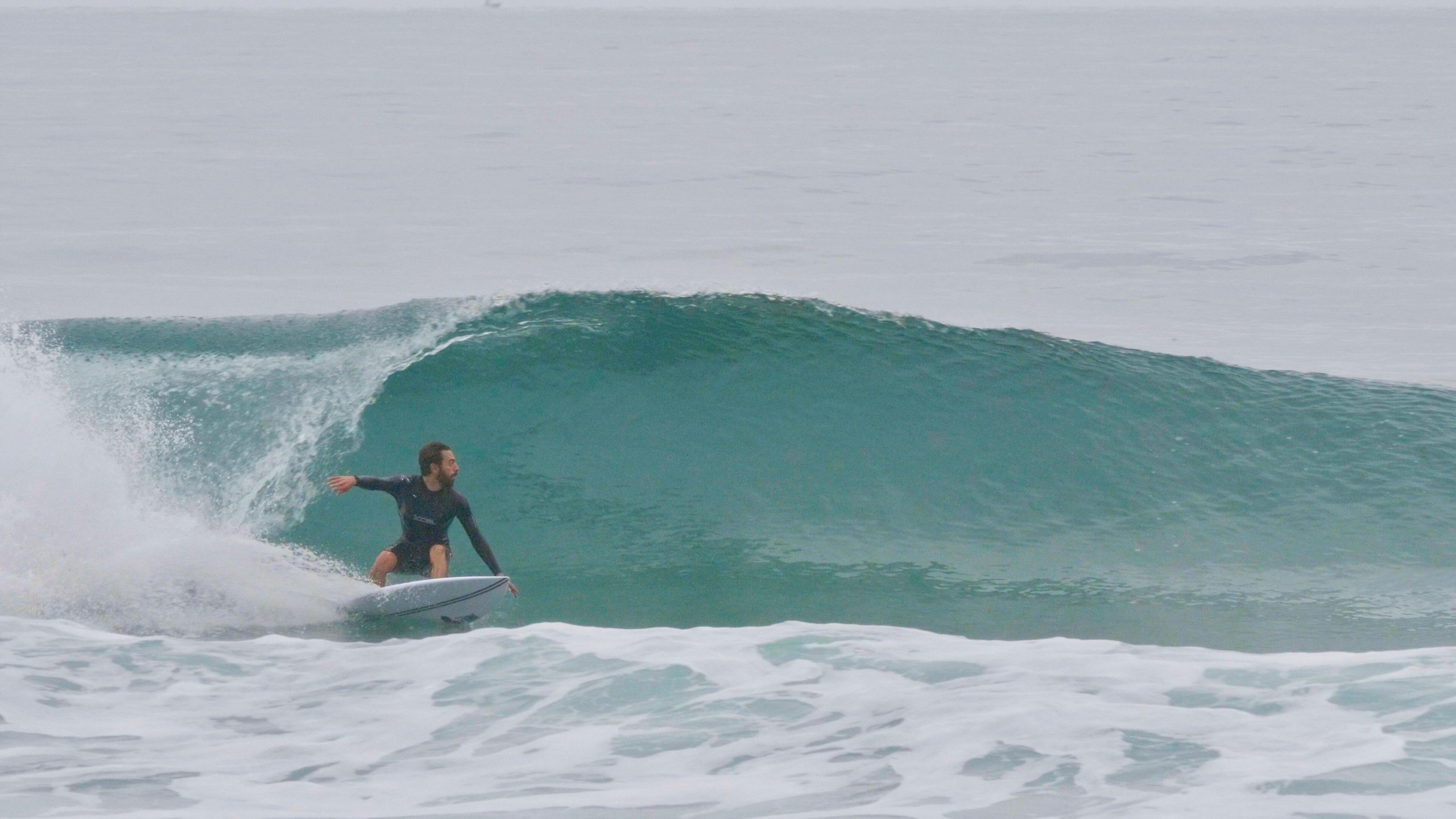
Dane’s chest high is my DOH.
Photography
Ben Judkins
Despite this David and Goliath distinction, Dane and I ride Spine-Tek in the same stiffness.
Bringing this back to golf: while someone of Dane’s size and strength would swing a club of extreme stiffness, a hacker of my diminutive stature would use a shaft of middling stiffness at most. Yet, our boards are infused with equivalent Spine-Tek stiffness.
It’s likely that CI’s Spine-Tek does, in fact, achieve all the attributes they’ve listed above, but maybe it performs best for surfers who possess a certain degree of power and mass.
Or maybe Dane is just an excellent surfer to my mediocre, therefore making any comparison moot.
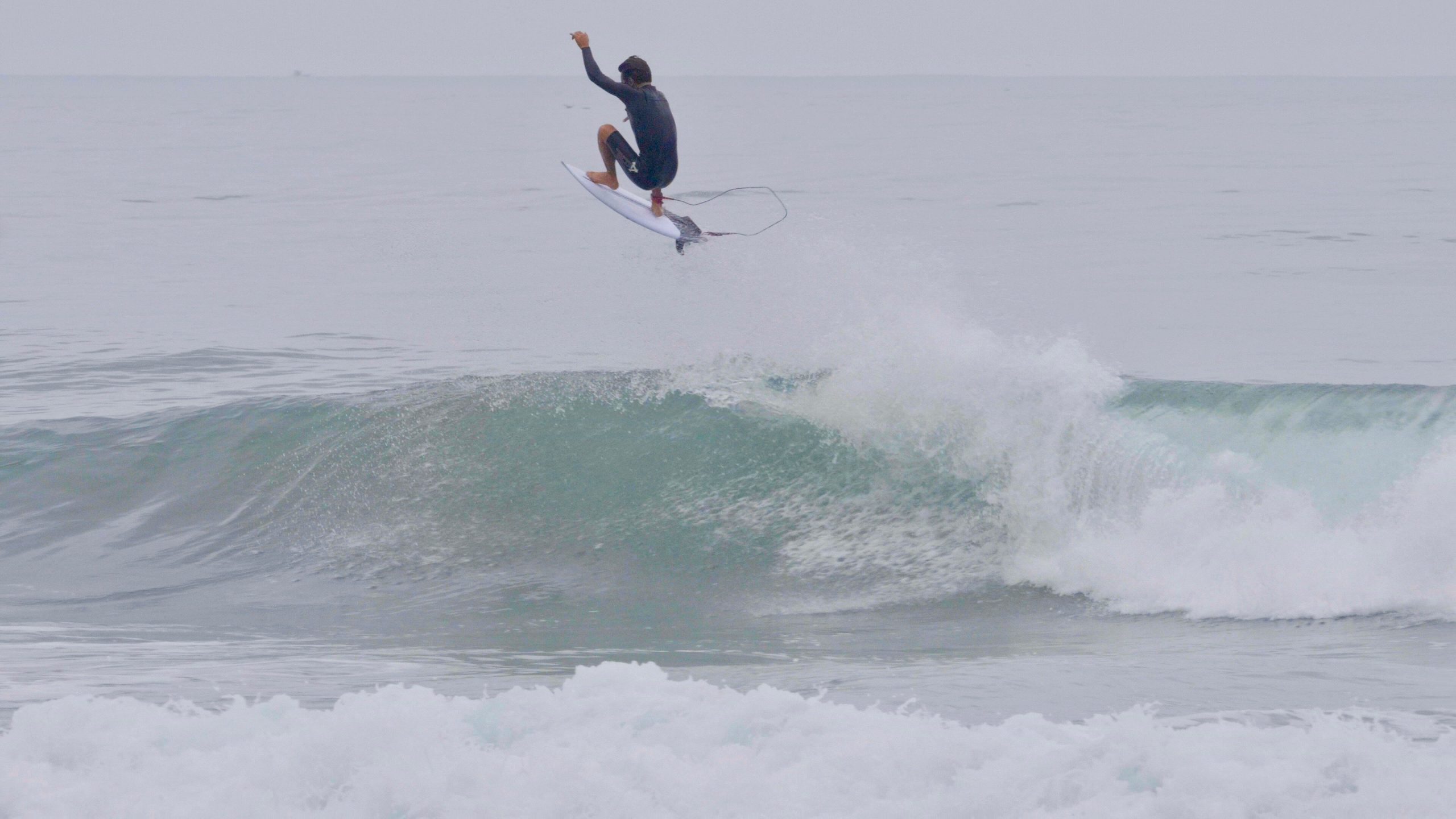
Photography
Ben Judkins
As I struggled to connect with the construction, Channel Islands’ Devon Howard sent me a piece of sage advice:
“Why don’t you try the CI two-plus-one fin setup? A lot of the team guys have been riding the Rocket Wide in that, and apparently they love it.”
Growing up in the perma-thruster era, it’s been an uphill battle convincing my subconscious mind to accept the concept of “alternative” design.
The hardest part is embracing the notion that performance cannot be defined in a singular capacity… That sometimes it’s okay to nurse a bottom turn, and sometimes going straight at a rabbit’s pace is the most progressive thing you can do on a wave.
So I ripped out the medium Techflex JJF’s (my go-to fins in any board, anytime) and slapped in a set of Channel Islands two-plus-ones, which offer two large side fins for drive and a small center fin for control and stability.
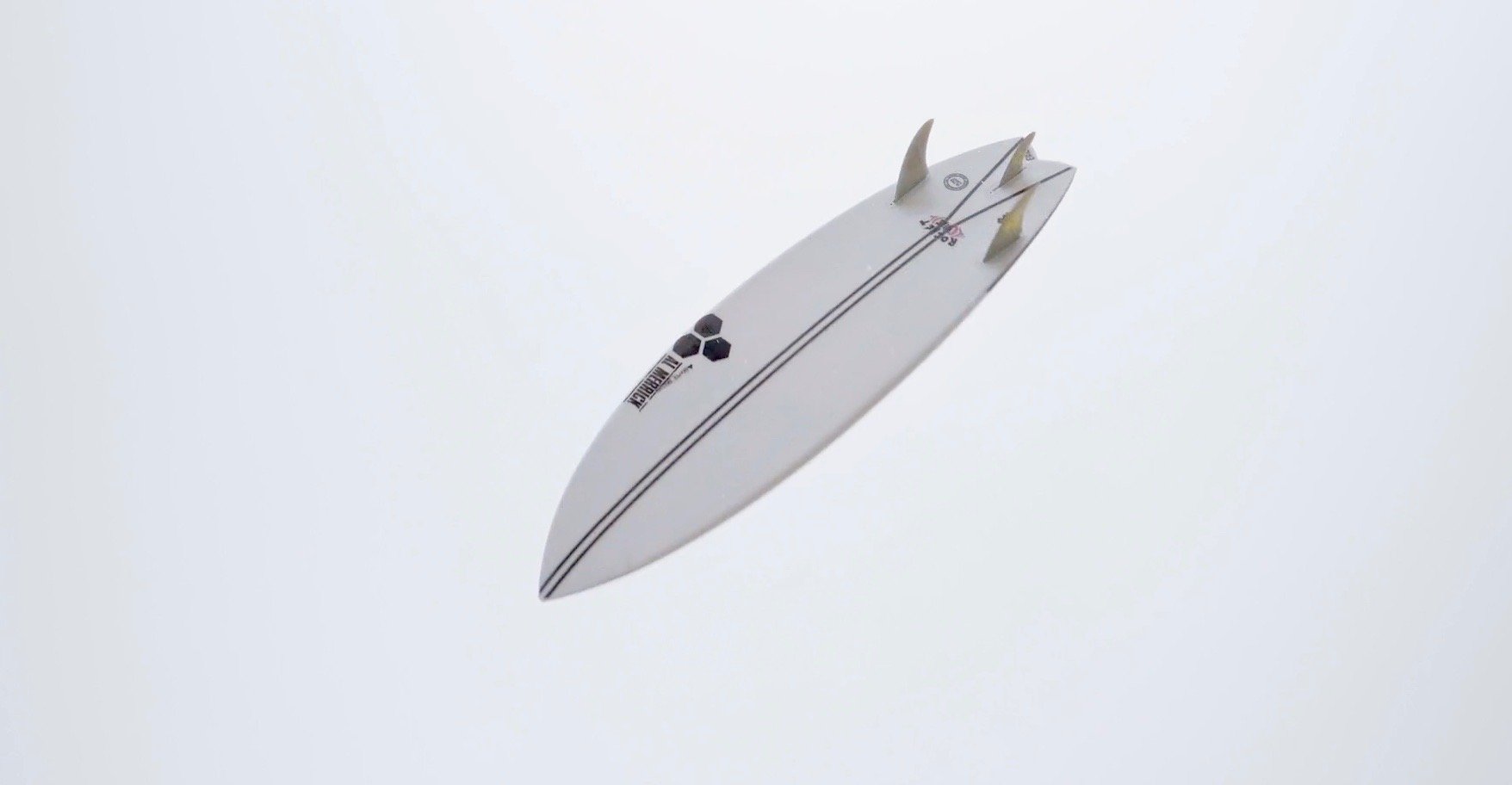
Photography
Ben Judkins
Instantly the board felt like sitting down in the water rather than riding on top of it.
I’m not sure if the larger side fins helped to “ground” the board or what, but that previous feeling of buoyancy was replaced with a newfound connection and drive, which can be seen throughout the second half of the video.
The two-plus-one provided certain feelings to which I was unaccustomed, such as a subtle slide off the bottom, but it wasn’t difficult to discover the fix – just slide your back foot forward when bottom turning so that it sits atop the side fin, rather than the trailer. Once that was sorted, I was able to further engage the rail and create more seamless swooping motions through the surface of the water.
It may be one of surfing’s greatest cliches, but goddamn, can a set of fins ever change a surfboard!
Having had time to consider the Rocket Wide objectively, I would deem it a seriously fun option for waves in the waist to head-high range. The Spine-Tek construction had its advantages, but I remain convinced that it’s ideal for stronger, heavier surfers unlike myself. And, like Channel Islands’ Devon Howard graciously informed me, this board might work best with a non-normative fin setup.
Below we’ll break down the specific characteristics of the Rocket Wide in five crucial categories.
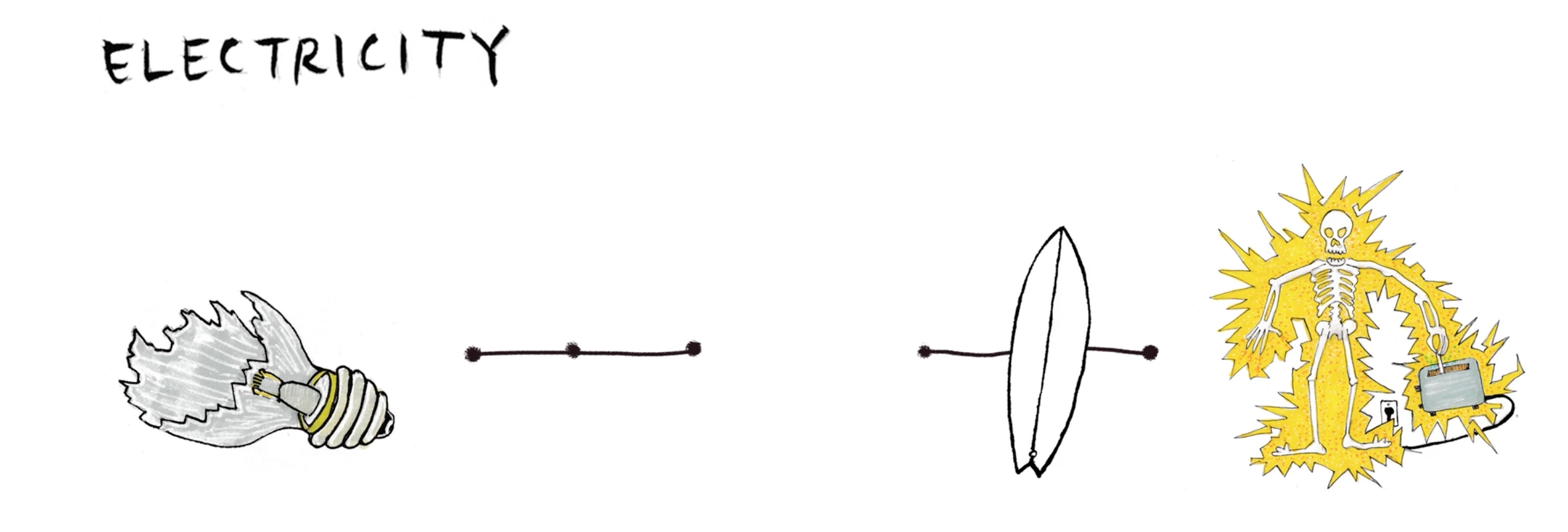
Photography
Pentagram Pizza
Electricity
As its name implies, the Rocket Wide has an inflated nose and tail that allow for ample speed generation in any type of condition. With the Spine-Tek epoxy construction, I felt the board was typically on top of the water and wanting to always be on the move. This translated into quick transitions between turns and plenty of speed to deliver maneuvers. This is best seen in the miniature ‘oop-to-bank at 0:30 in the clip above. Normally after a rotational air I wouldn’t have the requisite speed or control to perform another quick turn without pumping, but on the Rocket Wide it felt totally natural.

Photography
Pentagram Pizza
Airworthy
Perhaps a side-effect of the Rocket Wide’s natural electricity, this board also has a serious proclivity for flight. As previously mentioned, the Spine-Tek construction felt ready to pop out of the water at a moment’s notice, which meant that on the Rocket Wide, even pedestrian sections became viable to launch. When landing airs, the Rocket Wide continued to plane over the water’s surface rather than digging in or sinking, which is a wonderful trait for those who enjoy trying airs in smaller conditions.
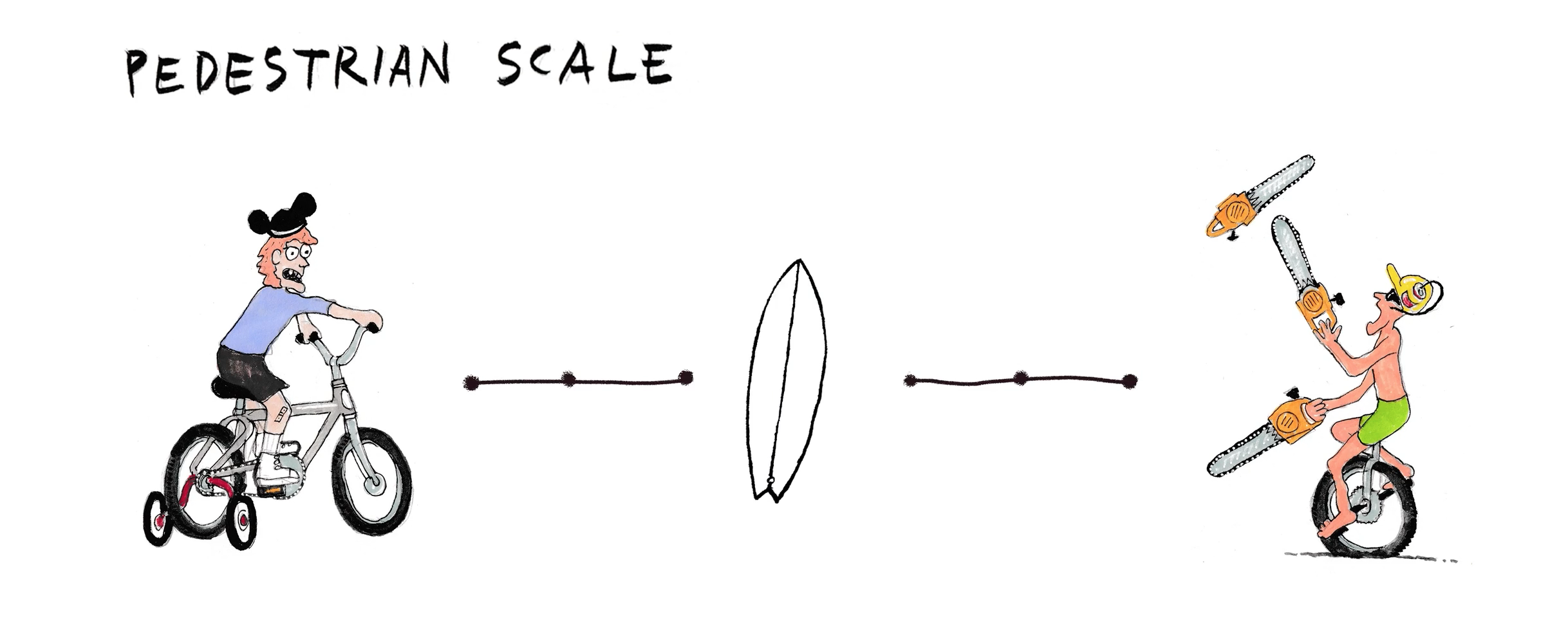
Photography
Pentagram Pizza
Pedestrian Scale
On face value, the Rocket Wide is an easy board to ride – it’s a shorter, wider, well-designed hybrid craft that will work in any “typical” conditions. However, I did struggle to connect with the Rocket Wide before switching fins, which is something that should be taken into consideration if purchasing this craft. And when I talk about connection, it’s in reference to the synchronicity one feels between body and board throughout the ride. If you feel like you’re struggling with that on the Rocket Wide (or any board for that matter), don’t be afraid to pop in a two-plus-one or other variable fin setup.

Photography
Pentagram Pizza
Preferred Size
While the Rocket Wide was more than functional in small conditions (especially cute wedges!), I felt its abilities were maximized in the chest-to-head-high range, particularly when there was a bit of curve in the face. Unleash this craft on a playful day at your local and watch it fly!

Photography
Pentagram Pizza
Railwork
According to Channel Islands, the Rocket Wide was designed with carving in mind. Seeing as how the board a Dane G. original, this makes perfect sense. But in my experience, it wasn’t that easy to engage the rail. For this, I think there are a couple reasons:
1. A shorter rail-line is almost always more difficult to drive through the water, and the Rocket Wide is meant to be shaped 2-4 inches shorter than rider.
2. Spine-Tek construction is relatively stiff and buoyant, making it difficult to hook on a dime. However – and I really can’t emphasize this enough – changing to the two-plus-one fin setup amplified my railwork by a considerable margin. I’m no skeg expert, but something about the larger, upright side fin allowed me to drive through the water and create more force with my turns. When you find the sweet spot on this thing, it’s like an exacto knife through frog liver.
Build your own Rocket Wide here.
Get the Channel Island two-plus-one fins here.





Comments
Comments are a Stab Premium feature. Gotta join to talk shop.
Already a member? Sign In
Want to join? Sign Up